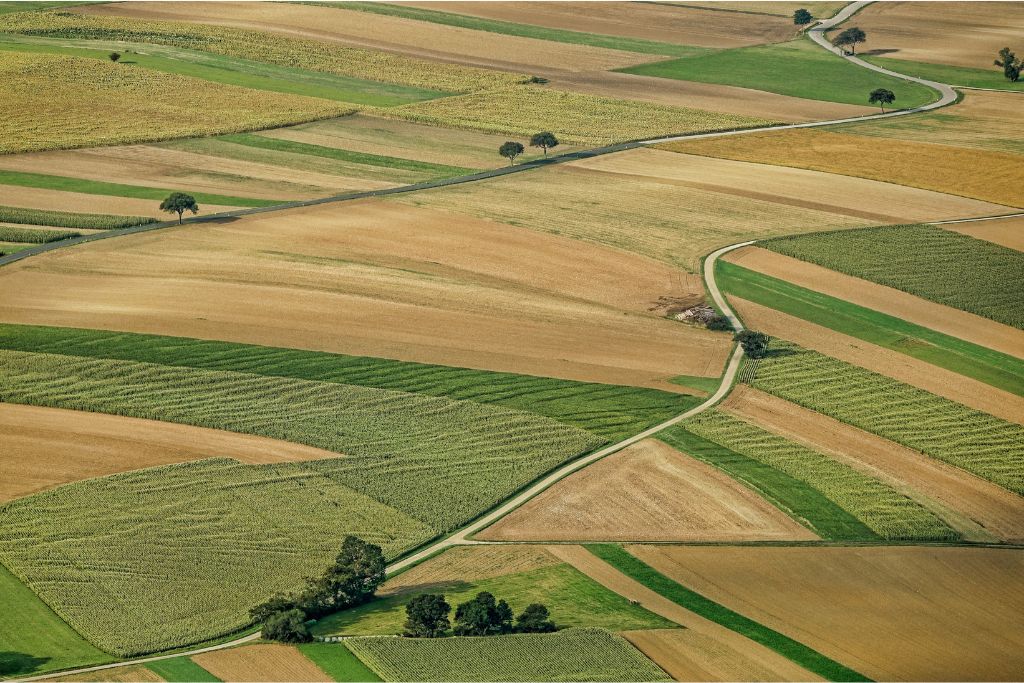Agriculture represents a crucial sector that underpins our population growth and well-being. It has been providing nourishment for generations. According to the United Nations, agricultural development is one of the most powerful tools to combat extreme poverty, boost prosperity, and feed the global population However, our current methods of food production, including monocropping and intensive tilling, have degraded over one-third of the world’s productive topsoil while failing to provide the agricultural yields necessary to sustain the growing global population. We take a look at the major challenges the agricultural sector faces and what alternatives to traditional agriculture should be prioritised in 2023.
—
What Are the Biggest Challenges the Agricultural Sector Faces in 2023?
1. Climate Change
Changing weather patterns, weather extremes, and climate change-triggered droughts are among the key drivers of food insecurity. All these events have a huge impact on food production, as they significantly limit the quality, availability, and accessibility of resources, and compromise the stability of food systems around the world.
Agriculture is highly dependent on climate and weather conditions. Prolonged drought or extensive rainfall can have devastating repercussions on soil health and fertility. Average global crop yields for maize or corn are projected to drop by 24% in the next 60 years. Maize is a crucial food staple in most countries and it is grown all over the world, but the largest quantities are produced in nations near the equator, including North and Central America, West Africa, Central Asia, Brazil, and China.
While agriculture is heavily compromised by the climate crisis, the sector is also one of the main contributors to global warming. In fact, agriculture contributes almost one-third to global anthropogenic greenhouse gas emissions, reason for which scaling up alternative, more sustainable practices must become a priority.
2. Insufficient Agricultural Land
Of the 1.38 billion hectares of arable land available worldwide, more than one-third has been irreversibly compromised since 1961 owing to extensive land conversion and traditional agricultural methods such as monocropping and intensive tilling and land conversion that lead to soil erosion, desertification, and salinisation.
In 2011, the Food and Agriculture Organization (FAO) reported a decline of 54 million hectares of arable land across developed countries in North America, Europe, and South Asia. Meanwhile, some countries in East and North Africa as well as South Asia have already reached their limit of farmable land. Only 12% of the global land surface is used for crop production and it is unlikely this number will increase mostly due to urbanisation. That’s why the pressure remains to preserve the existing arable land, despite most of it already starting to degrade..
3. Growing Population
In 2022, the world population hit 8 billion and if growth continues at the same rate, it will double in next 50 years if the growth continues at the same rate. The reasons behind such unprecedented growth are obvious: high fertility levels and drastic increases in human lifespans – thanks for the most part to remarkable advancements in public health and medicine as well as nutrition and personal hygiene – have accelerated population growth significantly over the last century.
An obvious consequence of population growth is a higher demand for food, but if agriculture cannot keep up, then more people will become hungry. And current figures are already alarming.
In 2021, as many as 828 million people suffered from hunger, an increase of 46 million compared to the previous year. The agricultural sector must undergo serious changes to prevent a catastrophe because of an already scarce arable land to provide sufficient nutritious food resources, combined with other impacts of climate change on food resources.
A constantly growing global population can also have adverse effects, including the lack of water resources and added pressure on available arable land. Agriculture already accounts for 70% of all freshwater used on the planet. As the global population is estimated to exceed 9 billion by 2050, it is becoming increasingly urgent to find alternative solutions that allow feeding the world without destroying it.
4. Biodiversity Loss
The benefits of biodiversity for our planet are remarkable. There would be no healthy ecosystems to provide the food we eat or air we breathe without a wide range of all kinds of animals, plants or microorganisms. Soil is one of the main global reservoirs of biological diversity – 25% of animal species on Earth live underground and 40% of organisms in terrestrial ecosystems are in contact with the soil at some point during their existence.
The extensive loss of biological diversity in agriculture is an example of what biologists call genetic erosion. It is a process that results in the loss of an entire species, for instance, in ancient North America, when corn (a species native to Central America) was introduced, it began replacing a number of domesticated plants. Genetic erosion can also happen within species. For example, in India, of the 400,000 varieties of rice that existed originally, only about 30,000 remain today. Genetic erosion happens over time, yet the process accelerated due to the rise in hybridised seeds and genetic modification in the 20th century.
In some parts of the world, people can already feel the negative impacts of the loss of biodiversity on their lives and diets. In Gambia, for example, large losses of wild foods have pushed local communities to turn to industrially processed foods to supplement their diets. Several countries including Ireland, Norway, Poland, and Switzerland also reported declines in bumblebee populations. In Oman, the loss of pollinator populations due to extreme heat associated with climate change has seen the decline of wild food, as well as figs and berries.
You might also like: How Climate Change Is Threatening Honey Bees and Other Endangered Bee Species
5. Low Investment In Agriculture
The agricultural sector plays an irreplaceable role in our societies. It is not only a source of raw materials, such as cotton, sugar, and wood, which makes it important for international trade but it is also a source of employment and is responsible for providing food supplies to the world. Countries with strong agricultural sectors often show higher levels of health and standards of living in that country. 95% of food supplies worldwide depend on soil, whether by growing crops or the grasses and other plants used to feed livestock.
Despite the countless amounts of research suggesting the need to invest in agriculture, this remains a relatively uncommon practice. Investing in agriculture basically means putting the funds behind food and crop production, processing, and distribution. However, it is not a very attractive strategy for the average investor as it requires a large capital commitment, and the time and costs of operating or leasing a farm are often substantial too. Agriculture also represents a market with very volatile prices, usually lower income for farmers, it comes with the environmental costs of intensive farming and agriculture is a key component of rural life, which is less and less popular in our modern society.
You might also like: The Future of Farming: Can We Feed the World Without Destroying It?
3 Sustainable Agriculture Practices We Must Scale Up
Simply focusing on more sustainable practices in agriculture, such as reducing tillage, practicing crop rotations, planting cover crops, and integrating livestock into crop production systems has already proven to have immense benefits. Mimicking natural processes of the Earth can improve soil conditions as well as increase biodiversity and yield production. Sustainable agriculture often uses practices that help to store carbon in the soil.
1. Regenerative Agriculture
Despite both sustainable and regenerative agriculture trying to respect the natural processes and their practices often overlap, the main goal of sustainable agriculture is to maintain the soil’s conditions and not worsen them. Regenerative agriculture goes one step further, as it tries to improve the quality of soil, it has the potential to rebuild natural systems and it can contribute significantly to reversing climate change. Regenerative agriculture tries to mimic the natural processes in ecosystems and hence revitalise the environment for future generations. Its main focus is to improve the biodiversity of the soil. Increased biological diversity of communities provides higher resilience during environmental stress periods, such as drought or intensive rains. As the world experiences an increasing amount of weather shocks, strong and adaptable soils and crops are crucial.
Moreover, regenerative farming practices like no-till cultivation, cover crops, and crop rotation keep the carbon in the soil, where it builds over time. In turn, carbon-rich organic matter feeds healthy plants. In turn, carbon-rich organic matter feeds healthy plants. Additionally, these practices often reduce input costs.
2. Vertical Farming
Farming does not always have to be about rows of fields covered with crops. Vertical farming is an innovative agricultural practice that has the potential of solving the impending food crisis. Instead of growing our crops horizontally, produce is grown in stacked vertical layers. By doing so, crops require less or even no soil at all, and water efficiency is increased at the same time. Vertical farming can guarantee regular produce output and boost crop yields based on its controlled environment, including temperature, light, humidity, and artificial intelligence, without pesticides and fertilisers.
This results in less pressure on arable land and saves water resources. Moreover, plants are not exposed to contamination as vertical farms are usually sealed off and crops grow faster than they do on an outdoor farm.
Dubai is home to the “world’s largest vertical farm”, which produced 900 tonnes of leafy greens every year. Emirates airline passengers have been eating the produce from the vertical farm ECO1 since July 2022 and UAE residents can buy the greens in stores.
“It’s our mission to cultivate a sustainable future to meet global demand for fresh, local food, and this new farm is the manifestation of that commitment,” said Craig Ratajczyk, the company’s CEO. “This new facility serves as a model for what’s possible around the globe.”
If you want to learn more about vertical farming, check out this article next: Ways in Which Vertical Farming Can Benefit Our Environment
3. Hydroponics
While all vertical farms use hydroponics, not all hydroponics systems are located in a vertical farm. Hydroponics can be used in vertical farms, greenhouses, or even outdoors. The main idea of hydroponics is that this system does not require soil for growing plants. The soil in hydroponic systems is substituted by coco fibre, rock wool, or peat. The nutrients are delivered to the roots of plants through a water-based mineral nutrient solution. Hydroponics use water up to 90% more efficiently compared to traditional soil-grown production, crop production is 3-10 times higher in the same amount of space, and no fertilisers are needed.
You might also like: Pros & Cons of Hydroponic Farming
Conclusion
Agriculture, although most times overlooked, is one of the most important sectors for economies and often sustains every other sector. That is why governments should understand the importance of supporting farmers in the transition to more sustainable agricultural methods.
Sufficient food production relies on nutritious and good-quality soils. This is the main reason why reforms in the agriculture sector are required. However, as John Scott, Zurich’s Head of Sustainability Risks, explains: “Finding a remedy will require changes that extend far beyond the soil itself. It will involve changing the way we farm and potentially the whole nature of the agrochemical industry. It could also change the way we feed people all around the world.”
You might also like: Can Traditional Farming Withstand Another Summer of Record-Breaking Heatwaves?


















